Product Description
Speed Reducer Planetary agricultural Travel Track Drive Motor Helical Single Dual Speed Spur Worm Gearbox for High Quality China Factory
Application of Speed Reducer
Speed reducers are used in a wide variety of applications, including:
- Conveyors. Speed reducers are used to slow down the speed of conveyor belts, which helps to prevent damage to the belt and the material being transported.
- Lifts and elevators. Speed reducers are used to control the speed of lifts and elevators, which helps to ensure safety and prevent accidents.
- Machine tools. Speed reducers are used to slow down the speed of machine tools, which helps to improve accuracy and precision.
- Wind turbines. Speed reducers are used to slow down the speed of wind turbines, which helps to improve efficiency and reduce wear and tear on the turbines.
- Pumps. Speed reducers are used to slow down the speed of pumps, which helps to improve efficiency and reduce cavitation.
- Fans. Speed reducers are used to slow down the speed of fans, which helps to improve efficiency and reduce noise.
Speed reducers are also used in a variety of other applications, including:
- Robotics
- Construction equipment
- Agriculture
- Mining
- Manufacturing
Speed reducers are an essential part of many machines and systems. They help to improve safety, efficiency, and precision.
Here are some additional benefits of using speed reducers:
- Reduced noise. Speed reducers can help to reduce noise levels, which can be important in both industrial and residential settings.
- Increased safety. Speed reducers can help to prevent accidents by reducing the risk of objects being thrown or damaged.
- Improved efficiency. Speed reducers can help to improve the efficiency of machines by reducing the amount of energy required to operate them.
- Extended lifespan. Speed reducers can help to extend the lifespan of machines by reducing wear and tear.
Overall, speed reducers are a versatile and beneficial tool that can be used in a wide variety of applications.
/* January 22, 2571 19:08:37 */!function(){function s(e,r){var a,o={};try{e&&e.split(“,”).forEach(function(e,t){e&&(a=e.match(/(.*?):(.*)$/))&&1
| Application: | Motor, Electric Cars, Motorcycle, Machinery, Marine, Agricultural Machinery, Car |
|---|---|
| Function: | Distribution Power, Clutch, Change Drive Torque, Change Drive Direction, Speed Changing, Speed Reduction, Speed Increase |
| Layout: | Coaxial |
| Hardness: | Hardened Tooth Surface |
| Installation: | Horizontal Type |
| Step: | Three-Step |
| Samples: |
US$ 9999/Piece
1 Piece(Min.Order) | |
|---|
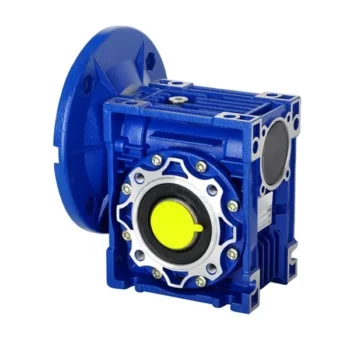
How to Install and Align a Worm Reducer Properly
Proper installation and alignment of a worm reducer are crucial for ensuring optimal performance and longevity. Follow these steps to install and align a worm reducer:
- Preparation: Gather all the necessary tools, equipment, and safety gear before starting the installation process.
- Positioning: Place the worm reducer in the desired location, ensuring that it is securely mounted to a stable surface. Use appropriate fasteners and mounting brackets as needed.
- Shaft Alignment: Check the alignment of the input and output shafts. Use precision measurement tools to ensure that the shafts are parallel and in line with each other.
- Base Plate Alignment: Align the base plate of the reducer with the foundation or mounting surface. Ensure that the base plate is level and properly aligned before securing it in place.
- Bolt Tightening: Gradually and evenly tighten the mounting bolts to the manufacturer’s specifications. This helps ensure proper contact between the reducer and the mounting surface.
- Check for Clearance: Verify that there is enough clearance for any rotating components or parts that may move during operation. Avoid any interference that could cause damage or performance issues.
- Lubrication: Apply the recommended lubricant to the worm reducer according to the manufacturer’s guidelines. Proper lubrication is essential for smooth operation and reducing friction.
- Alignment Testing: After installation, run the worm reducer briefly without a load to check for any unusual noises, vibrations, or misalignment issues.
- Load Testing: Gradually introduce the intended load to the worm reducer and monitor its performance. Ensure that the reducer operates smoothly and efficiently under the load conditions.
It’s important to refer to the manufacturer’s installation guidelines and specifications for your specific worm reducer model. Proper installation and alignment will contribute to the gearbox’s reliability, efficiency, and overall functionality.
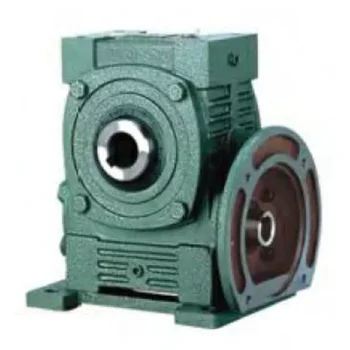
Worm Gearbox vs. Helical Gearbox: A Comparison
Worm gearboxes and helical gearboxes are two popular types of gear systems, each with its own set of advantages and disadvantages. Let’s compare them:
| Aspect | Worm Gearbox | Helical Gearbox |
| Efficiency | Lower efficiency due to sliding friction between the worm and worm wheel. | Higher efficiency due to rolling contact between helical gear teeth. |
| Torque Transmission | Excellent torque transmission and high reduction ratios achievable in a single stage. | Good torque transmission, but may require multiple stages for high reduction ratios. |
| Noise and Vibration | Generally higher noise and vibration levels due to sliding action. | Lower noise and vibration levels due to smoother rolling contact. |
| Backlash | Higher inherent backlash due to the design. | Lower backlash due to meshing of helical teeth. |
| Efficiency at Higher Speeds | Less suitable for high-speed applications due to efficiency loss. | More suitable for high-speed applications due to higher efficiency. |
| Overload Protection | Natural self-locking feature provides some overload protection. | May not have the same level of inherent overload protection. |
| Applications | Commonly used for applications requiring high reduction ratios, such as conveyor systems and heavy-duty machinery. | Widely used in various applications including automotive transmissions, industrial machinery, and more. |
Both worm and helical gearboxes have their place in engineering, and the choice between them depends on the specific requirements of the application. Worm gearboxes are preferred for applications with high reduction ratios, while helical gearboxes are chosen for their higher efficiency and smoother operation.
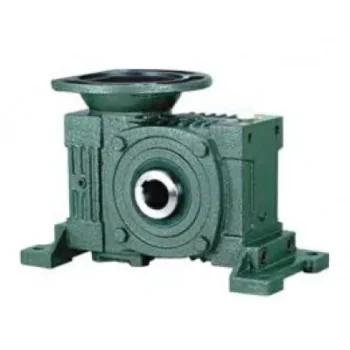
What Industries Commonly Use Worm Reducers?
Worm reducers are versatile mechanical components that find applications in various industries due to their unique advantages and capabilities. Some of the industries that commonly use worm reducers include:
- Material Handling: Worm reducers are widely used in material handling equipment such as conveyors, bucket elevators, and cranes to control movement and manage heavy loads.
- Automotive: They are utilized in automotive manufacturing processes, assembly lines, and vehicle positioning systems.
- Food and Beverage: Worm reducers are used in food processing and packaging machinery where hygiene and cleanliness are crucial.
- Agriculture: Agricultural equipment like irrigation systems and tractors use worm reducers for controlling rotational motion.
- Mining and Construction: Heavy-duty applications in mining equipment, excavators, and construction machinery benefit from the torque multiplication provided by worm reducers.
- Energy: Wind turbines and solar tracking systems use worm reducers to convert low-speed, high-torque motion into rotational energy.
- Textile: Textile machinery employs worm reducers for controlling speed and tension in weaving and spinning operations.
- Packaging: Packaging equipment relies on worm reducers for precise movement and positioning of packaging materials.
- Medical: Medical devices and equipment often utilize worm reducers for their accuracy and controlled motion.
- Printing: Printing machines use worm reducers to regulate paper feed and ensure consistent printing quality.
Worm reducers’ ability to provide high torque output, compact design, and self-locking characteristics makes them suitable for applications requiring reliable and controlled motion across various industries.


editor by CX 2024-02-27
China Single phase Electric motor Worm gearmotor 220 volts double enveloping worm gearbox
Relevant Industries: Developing Substance Outlets, Producing Plant, Equipment Restore Outlets, Foods & Beverage Factory, Farms, Printing Stores, Construction works , Power & Mining, Other
Personalized assist: OEM, ODM
Gearing Arrangement: Worm
Output Torque: 2.6-1760N.m
Input Speed: 750~3500rpm
Output Speed: fourteen-280rpm
Merchandise name: Gray color worm reduction gearbox
Model: From RV25 up to RV185
Content: Aluminum&iron cating
Shade: K9149 (Grey )OR RAL5571(blue)
Ratio: 7.5,10,15,twenty,thirty,40,50,60,eighty,100
Warranty: 1 12 months after vessel date
Quality Handle Method: ISO9001:2008
Port: ZheJiang or HangZhou Port,China
Products Description More Items Business Profile Product Line Certifications Exhibition Customer Reviews FAQ 1. How to choose a gearbox which fulfills our requirement?You can refer to our catalogue to select the gearbox or we can support to choose when you providethe technical info of essential output torque, output pace and motor parameter and so on.2. What details shall we give ahead of positioning a buy order?a) Type of the gearbox, ratio, input and output sort, input flange, mounting position, and motor informationetc.b) Housing color.c) Purchase quantity.d) Other particular demands.3. What industries are your gearboxes being utilized?Our gearboxes are broadly employed in the places of textile, food processing, beverage, chemical business,escalator,automatic storage products, metallurgy, tabacco, environmental security, logistics and and so forth.
Is a worm gear reducer right for your application?
If you’re interested in gear reduction and wondering if a worm gear reducer is right for your application, you’ve come to the right place. This gear reducer is efficient and compact. In addition, it has small clearances and is easy to install. Let’s take a closer look.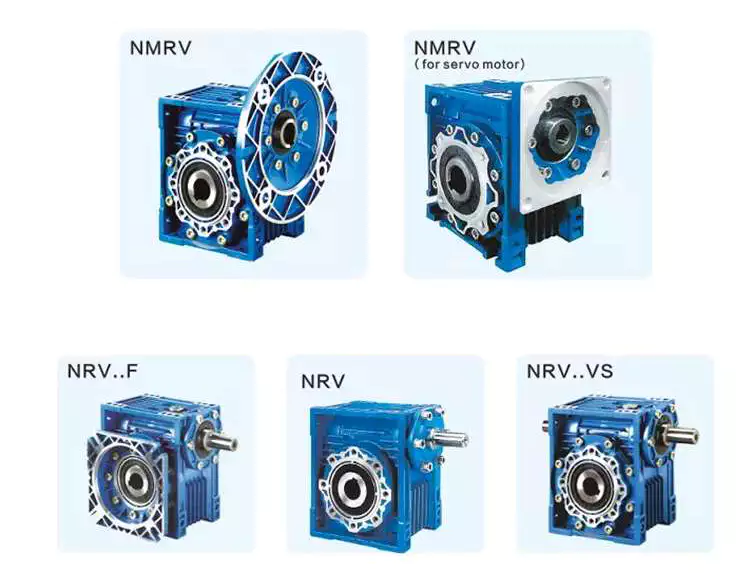
This is a reducer
Worm reducer is a type of reduction gear used in machinery. This gear reduces the output speed by changing the ratio of input to output. Gears come in a wide range of sizes and can be made from a variety of materials, including aluminum, cast iron, and stainless steel. Its efficiency depends on the ratio and size of the gears. It is usually used in low speed applications. But it can also be used as an auxiliary braking device for high-speed moving machinery.
When choosing a reduction gear, it’s important to look for models with multiple teeth. Ideally, it will have more teeth than the corresponding sprocket. This will reduce the noise produced by the gears. The maximum number of teeth of the worm gear should be greater than 40.
Worm gears produce less noise and vibration than conventional gears. Also, they are cheaper and smaller than other types of reduction gears. However, worm gears have some limitations that make them less efficient than other types. For example, they do not perform as efficiently as parallel or orthogonal axes, which are much better at transmitting power.
The main disadvantage of worm gears is the difficulty of lubrication. Worm gear reducers require more lubrication due to the helical motion of the gears. This means it is less efficient and more prone to wear than a standard gearbox. Helical motion has problems transmitting power and causes sliding friction, also known as sliding wear.
A worm reducer is a reduction gearbox used to decelerate a high-speed motor to a low-speed output. Worm gear reducers produce lower output speeds while maintaining high torque. Its gears are made of bronze or stainless steel and have a right-angle output. The gears are very small compared to other reducers, so they can be used in tight spaces and applications where space is limited.
Worm gear reducers are an excellent choice for applications requiring high torque and low speeds. These reducers are compact, durable and have a long service life. These gearboxes are also compatible with solid and hollow output shafts. This feature eliminates the need for chains or belts, reducing the number of moving parts. Plus, they’re easy to maintain, which means they’re an excellent choice for a variety of applications.
Worm gear reducers are also compact, versatile and easy to install. The worm gear itself is made from a single piece of alloy steel. It has a high helix angle and is case hardened and ground for durability. Its six AF hex sockets are designed for easy installation and a wide range of ratios. Worm gear reducers are also suitable for manual operation. They are easy to install, compact in design and compatible with a wide range of motors and drives.
Worm reducers are often used in industrial settings where a small amount of torque is required to move large objects. They are also useful when space is at a premium. They are compact and easy to install in tight spaces. Worm gears reduce the risk of tripping and are often made of durable materials, making them a popular choice.
Compared with planetary gearboxes, worm gear reducers have many advantages. They are quiet, produce less noise, and are more comfortable to use. They are also more energy efficient than their planetary counterparts. Furthermore, they can be combined with other gearboxes and trains to increase their output efficiency.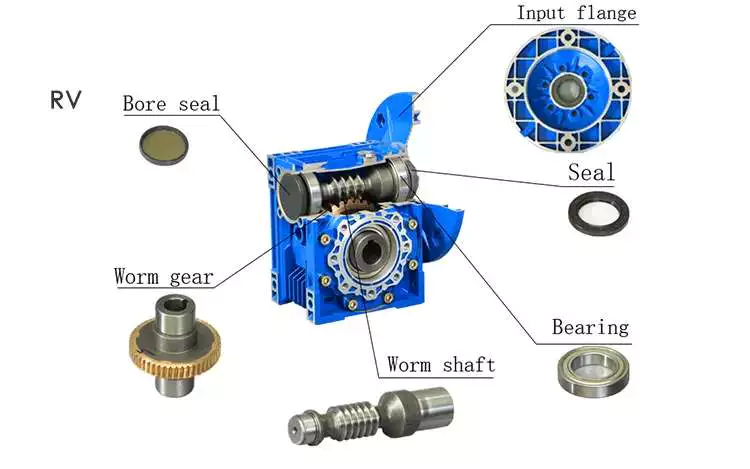
It is high efficiency
When a worm reducer is used in a gear-motor, it is critical to note that it is extremely high in efficiency. This type of reducer is typically much hotter than a hypoid reducer, which reduces the service life of the gear. The increased thermal stress on the sliding gears results in premature seal wear and leakage. Furthermore, excessive heat causes lubrication to break down and can cause contamination. Helical gear reducers are significantly cooler and have a low-maintenance design. Consequently, they can reduce factory downtime and energy costs.
A servo-worm reducer is an excellent choice for applications requiring high performance, repeatability, and precision positioning. These gear reducers have been specifically designed for use with servo motor technology, which provides tight integration of the gear motor. Other advantages of a servo-worm reducer include reduced angular backlash and longer life.
Hypoid gearmotors offer increased efficiency and allow smaller motors to be used. A 1 HP worm reducer can produce the same amount of output as a 1/2 HP hypoid reducer. A Nissei Corporation study compared the two types of reducers, comparing power, torque, and efficiency. As a result, a 1/2 HP hypoid gearmotor is much cheaper to operate than a 1 HP worm reducer.
The efficiency of a worm gear reducer depends on many factors, including the mesh of the gears and losses in the bearings and oil seal lips. The speed and load of the reducer also have an impact on its efficiency. As a result, worm gear reducers should be used with the right type of lubricant.
In a worm gear reducer, a non-intersecting shaft rotates against a gear, while the output worm gear rotates in a perpendicular direction. This arrangement produces high efficiency while reducing the noise and vibration of the gear motor. This gear reducer is also quiet and has a low friction coefficient.
It has a low clearance
Worm Reducers are typically designed with a low clearance, meaning that the worm is not allowed to touch the wheels in the gear arrangement. The lubricant used depends on the size of the gearing, and it is usually ISO 680 or ISO 460. Higher viscosities require special equipment.
Worm gears are popular in machines that need to stop quickly, such as lifts and elevators. The gears and worm are made of a soft material, minimizing backlash and failure rates. They are also popular in heavy-duty machines, such as rock crushers. But while this is an important aspect of their design, there are other factors to consider when choosing a worm gear.
Worm gears have multiple teeth, which allows for greater surface area contact and a better distribution of load. This feature allows for high transmission ratios without sacrificing power. Worm gears can be paired with other gearboxes to increase the overall efficiency of the system.
Worm gears are often used in heavy machinery, including trucks barreling down a deserted highway. They can also be found in packaging machinery, conveyors, and other small machinery. Their unique shape makes them ideal for tight spaces. But they also tend to wear and tear much faster than conventional gears.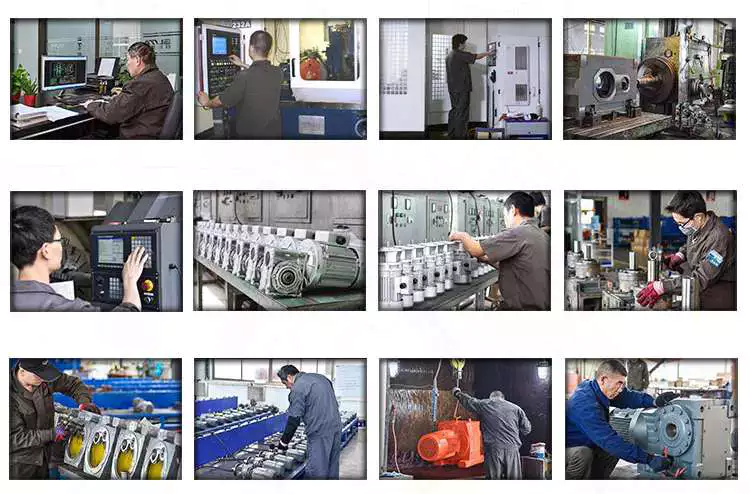
It has a high torque to weight ratio
The worm gear reducer is a versatile gear train that provides a high torque-to-weight ratio. These reducers are typically used in applications that require high torque and high gear ratios, such as machine tools. They also have a very compact design, enabling very high gear ratios at low speeds.
Worm gear reducers are very quiet, mainly because the input and output shafts are perpendicular to each other. Their low noise level is an advantage compared to planetary gearboxes. Compared with planetary reducers, worm gear reducers are also relatively cheap.
The worm gear consists of two parts: the helical butt-jointed worm gear and the worm. The screw-butted worm gear is connected to the shaft by a helical thread. The worm gear is a variation of the six-simple machine. The worm is located in the worm wheel, which forces the worm to rotate. It also changes the plane of motion. Worm gears are usually made of steel or brass.
Worm gear reducers are one of the most popular types of reducers. It provides high torque and high speed ratio in a compact package. These reducers are used in many power transmission systems, including elevators, safety gates, conveyor belts, and medical testing equipment.
Worm reducers come in a variety of shapes and sizes, including parallel shaft reducers and planetary worm reducers. They have a high torque-to-weight ratio and are easy to maintain. They are also lightweight and relatively easy to install. This makes them an excellent choice for many applications.
Worms can be assembled using stepped shafts, set screws or dowel pins. However, the worm is subject to a lot of thrust and must be held firmly. This could lead to a rebound. Also, the bearings may come loose and the worm may move. To avoid backlash, make sure the worm gear shaft passes through the midpoint of the worm face width.


editor by czh